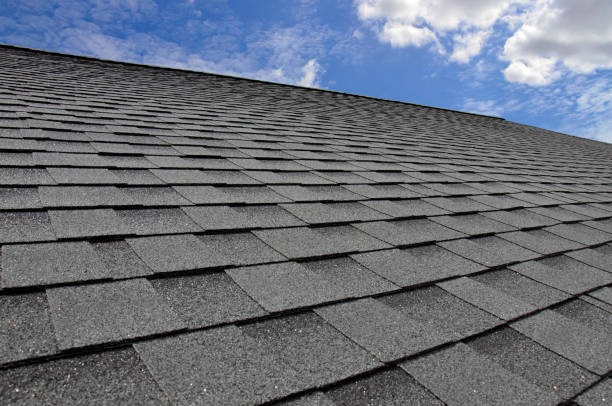Your asphalt roof is your home’s first line of defense against sun, wind, rain, and snow. But how often do you really check its condition? Most homeowners don’t give their roof a thought until there’s a big, visible problem—by then, repairs are usually more expensive. Learning to spot early signs of damage on your asphalt roof can save you money, headaches, and even bigger issues down the road. In this comprehensive guide, we’ll show you how to identify problems early and keep your roof in top-notch shape for years to come.
Why It’s Important to Catch Roof Damage Early
It’s easy to underestimate the crucial role of early detection. Even small problems, if ignored, can lead to leaks, structural rot, weakened support beams, mold, or even interior water damage. Repairing minor asphalt roof issues is almost always simpler and less expensive than waiting for major repairs. Plus, maintaining your roof’s integrity extends its lifespan and keeps your energy bills in check.
Common Causes of Asphalt Roof Damage
Before we dive into what early damage looks like, let’s take a moment to understand what causes it. Here are some of the main culprits:
-
Weather: Hail, heavy rain, snow, ice, and strong winds all take their toll over time.
-
Age: Asphalt shingles last around 20-30 years, but they deteriorate as they get older.
-
Poor Installation: If the original work wasn’t done properly, shingles become vulnerable.
-
Lack of Maintenance: Debris accumulation and clogged gutters can hasten damage.
-
Tree Limbs: Overhanging branches can scratch, nick, or even break shingles.
What to Look For: Early Signs of Asphalt Roof Damage
Knowing what early roof damage looks like will put you ahead of the game. Sometimes, the signs are subtle, but vigilance pays off. Let’s explore the most common issues you should be on the lookout for:
Curling, Cracking, or Buckling Shingles
Shingles that begin to curl up at the edges, crack down the middle, or buckle up from the roof deck are early indicators that something’s wrong. Curling usually happens due to age, poor attic ventilation, or exposure to harsh weather. Cracks can occur due to thermal expansion or simply from years of sun exposure. Whenever you notice these issues, it’s time to investigate further—even a small area of damage can lead to leaks.
Missing Granules or Bald Spots
Asphalt shingles are covered in tiny granules that shield them from the sun’s UV rays. Over time, you may notice granules accumulating in your gutters or forming small piles near your downspouts. If you spot patches on your roof where the shingles have bald spots, that’s a red flag. Missing granules weaken the shingles and speed up deterioration.
Loose or Missing Shingles
If you notice a patch of roof that looks out of place, or if you see shingles in your yard after a storm, you need to take action. Loose or missing shingles are a big entry point for water. Sometimes, these problems are visible from the ground, but you’ll often need to get a closer look or use binoculars for inspection. That way, you can spot trouble areas before a leak begins.
How to Inspect Your Roof Safely
Spotting early signs doesn’t mean you need to climb on your roof every month. In fact, safety should be your number one concern. Here are some ideas on how to check your roof without putting yourself at risk:
-
Walk around your home and check for visible damage from the ground.
-
Use binoculars to examine shingle condition and alignment.
-
Look for signs of wear on roof valleys, flashing around chimneys and edges.
-
If you must go up, only do so with a sturdy, properly positioned ladder and never in wet or windy conditions.
-
Consider hiring a professional for a full inspection at least once a year.
Problems Visible from Inside the House
Sometimes, the damage shows itself indoors before you even spot it outside. Here’s what to look for inside your home:
-
Stains or discoloration on ceilings or walls
-
Bubbling or peeling paint or wallpaper
-
Mold or mildew odors in the attic or upper floors
-
Attic wood that’s wet, dark, or rotting
Don’t ignore these signs—they often mean water is getting in somewhere, and usually through the roof!
Special Considerations for Different Roof Slopes and Styles
Different types of roof construction can contribute to unique maintenance challenges. For example:
-
Steep-pitched roofs: Water runs off quickly, but wind can lift shingles more easily.
-
Low-sloped roofs: Water tends to pool, which can increase the risk of leaks and granule loss.
-
Complex rooflines: More valleys and ridges mean more chances for water to seep in if the flashing or shingles are damaged.
Keep Your Gutters and Valleys Clean
Clogged gutters and roof valleys are a recipe for trouble. Leaves, sticks, and debris that block your gutters and valleys force water to back up underneath the shingles, which can cause rot and leaks. Cleaning these areas at least twice a year not only helps your roof but can also prevent damage to your siding, windows, and foundation.
How Weather Contributes to Roof Damage
After severe weather events, always inspect your roof for new signs of trouble. Here are common aftereffects:
-
Hail: Can cause granule loss, bruised shingles, and dents in metal flashing.
-
Heavy winds: May lift, crack, or completely blow away shingles.
-
Snow and ice dams: Build up along eaves, allowing water to back up beneath shingles.
If you suspect hidden damage but aren’t sure what to look for, consult a roofing professional.
The Importance of Ventilation and Insulation
Proper attic ventilation and insulation play a huge role in protecting your asphalt shingles. Without good airflow, heat and moisture can build up under your roof, leading to premature shingle aging and possible wood rot. Make sure that attic vents are clear and that the insulation is in good condition. If you see frost on rafters in winter or excessive heat in summer, this may be a sign that your attic isn’t properly ventilated.
Prioritizing Preventive Maintenance
Routine maintenance is the secret to a long-lasting roof. Here are some steps for keeping your asphalt shingles strong:
-
Clean out all gutters and downspouts at least once per season.
-
Trim trees and remove any overhanging branches.
-
After any major storm, check for missing, cracked, or buckled shingles.
-
Look for shingle granules in your gutters and around your foundation.
-
Have a professional do a yearly inspection even if you haven’t noticed any obvious issues.
What to Do if You Need Immediate Help
If you discover sudden problems such as active leaks, multiple missing shingles, or damage after a storm, it’s wise to consider emergency roofing services in Clarksville. Time is of the essence for emergency repairs, especially with water entering your home. Delaying could lead to mold, compromised insulation, and expensive repairs.
Choosing the Right Materials for Repairs
If you need to repair or replace sections of your roof, choosing high-quality shingles is key to preventing future damage. Use materials that match or exceed the original, and make sure that all repairs are properly sealed against moisture and wind lift. Home improvement supply stores carry a variety of shingles suited for different climates and budgets.
Know When to Call a Pro
There are times when DIY fixes just aren’t enough. If you spot extensive damage—major granule loss, many missing or curling shingles, widespread algae or moss, or interior leaks—it’s best to get a professional inspection and estimate. Fast, expert repairs can stop the damage from spreading.
Signs of Aging in Asphalt Shingles
As your roof ages, please pay attention to how your asphalt roofing looks compared to its original state. Discoloration, sagging, and sticky or blistered spots all signal trouble. Even if your roof is relatively new, small patchy areas can turn into big problems over time. Keeping an eye on these signs will help you decide when it’s time to repair or replace your aging roof.
Choosing Local Help for Roof Care
Working with professionals who understand the local climate is a game-changer. Providers who specialize in asphalt roofing in Clarksville know the specific weather challenges your roof faces and can recommend the best care for your home. They can also offer maintenance tips tailored to local conditions, greatly improving your roof’s long-term health.
Final Thoughts
Learning how to spot early signs of damage on your asphalt roof puts you in control, protecting your home, family, and investment. With regular inspections, a keen eye, and prompt attention to small issues, you can avoid expensive repairs and extend the life of your roof. Remember, the effort you put in today pays off with peace of mind tomorrow. Take action, stay vigilant, and your asphalt roof will shelter you for years to come!

